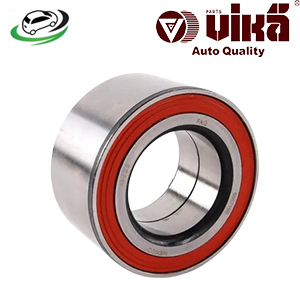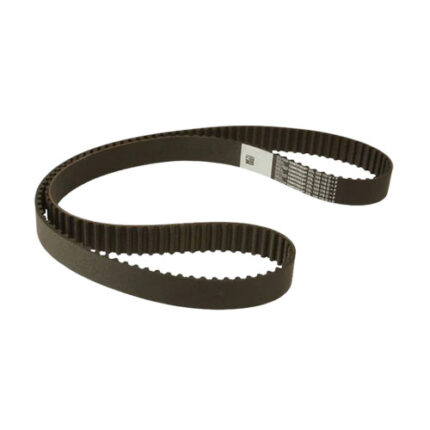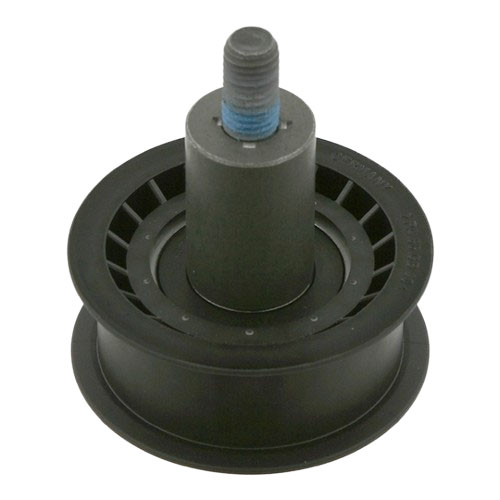-11%
Get AUDI A2 8Z0-1.6L/1.4L Timing Belt Tensioner Roller 036109244J in Kenya
The timing belt tensioner roller is a critical component in an internal combustion engine’s timing system. It plays a pivotal role in maintaining the proper tension of the timing belt, ensuring that the engine’s camshaft and crankshaft are synchronized. This synchronization is essential for the precise operation of the engine’s valves and pistons. In this comprehensive overview, we will explore the timing belt tensioner roller’s function, its importance, types, signs of wear, maintenance practices, and the consequences of neglecting this vital component.
What is a Timing Belt Tensioner Roller?
A timing belt tensioner roller is a part of the timing belt tensioner assembly, which also includes a spring or hydraulic mechanism that applies force to maintain the correct tension on the timing belt. The roller itself is a small wheel or pulley that the timing belt runs over, helping to guide the belt and keep it taut. The tensioner roller ensures that the timing belt remains in place and does not slip or become too loose, which could lead to a catastrophic engine failure.
Function of the Timing Belt Tensioner Roller
The primary function of the timing belt tensioner roller is to maintain consistent tension on the timing belt as it moves over the engine’s pulleys. The timing belt connects the engine’s crankshaft to the camshaft, allowing these two critical components to rotate in sync. This synchronization ensures that the engine’s valves open and close at the correct times in relation to the pistons’ movements, which is crucial for efficient combustion and engine performance.
The tensioner roller works in conjunction with the tensioner mechanism to adjust the belt tension automatically. As the timing belt wears over time or as the engine operates under various conditions (such as changes in temperature or load), the tensioner roller compensates for these variations, preventing the belt from becoming too tight or too loose. This automatic adjustment is vital for maintaining the engine’s timing and preventing damage to internal components.
Importance of the Timing Belt Tensioner Roller
The timing belt tensioner roller is essential for several reasons:
- Ensures Proper Timing: The roller helps maintain the correct tension on the timing belt, which is crucial for keeping the crankshaft and camshaft synchronized. This synchronization is necessary for the precise timing of the engine’s valves, which affects overall engine performance and efficiency.
- Prevents Slippage: If the timing belt loses tension, it can slip on the pulleys, leading to a misalignment of the engine’s timing. This can cause the engine to run poorly, misfire, or even result in severe engine damage if the pistons and valves collide.
- Reduces Wear and Tear: The tensioner roller minimizes wear on the timing belt by keeping it properly aligned and tensioned. A loose or improperly tensioned belt can cause excessive wear on the belt and the pulleys, leading to premature failure.
- Maintains Engine Efficiency: A properly functioning timing belt tensioner roller helps ensure that the engine operates efficiently. Proper timing is crucial for optimizing fuel combustion, reducing emissions, and maximizing power output.
Types of Timing Belt Tensioner Rollers
There are two primary types of timing belt tensioner rollers:
- Mechanical (Spring-Loaded) Tensioner Rollers:
- Description: Mechanical tensioner rollers use a spring mechanism to apply constant force to the timing belt. As the belt stretches or the engine’s operating conditions change, the spring adjusts the tension accordingly.
- Advantages: Mechanical tensioner rollers are simple, reliable, and cost-effective. They do not require external power sources and are relatively easy to install and maintain.
- Disadvantages: Over time, the spring can lose its tension, reducing the effectiveness of the tensioner. Additionally, mechanical tensioners may not adjust as precisely as hydraulic tensioners under certain conditions.
- Hydraulic Tensioner Rollers:
- Description: Hydraulic tensioner rollers use pressurized oil or fluid to maintain tension on the timing belt. The hydraulic mechanism provides more precise and consistent tension adjustment, even under varying engine conditions.
- Advantages: Hydraulic tensioner rollers offer superior precision and consistency in maintaining timing belt tension. They are particularly effective in high-performance or variable-load engines.
- Disadvantages: Hydraulic tensioners are more complex and expensive than mechanical tensioners. They also require a connection to the engine’s oil system, which can complicate installation and maintenance.
Signs of a Worn Timing Belt Tensioner Roller
Over time, the timing belt tensioner roller can wear out, leading to potential engine problems. Here are some common signs that the tensioner roller may be failing:
- Noise: A failing tensioner roller often produces a high-pitched squealing, chirping, or grinding noise. This noise is caused by the roller’s bearings wearing out or the belt slipping on the pulleys.
- Timing Belt Wear: If the timing belt shows signs of uneven wear, fraying, or damage, it may indicate that the tensioner roller is not maintaining proper tension. This can lead to the belt rubbing against the pulleys or other components.
- Engine Misfires or Rough Idling: If the timing belt tensioner roller is not functioning correctly, it can cause the timing belt to slip, leading to engine misfires, rough idling, or a decrease in engine performance.
- Loss of Tension: If the timing belt feels loose or there is noticeable slack in the belt, the tensioner roller may be failing. This loss of tension can lead to a significant misalignment of the engine’s timing components.
- Check Engine Light: In some cases, a failing timing belt tensioner roller may trigger the check engine light. This is because the engine’s computer detects timing issues caused by the loose or misaligned belt.
Maintenance and Replacement of the Timing Belt Tensioner Roller
Regular maintenance and timely replacement of the timing belt tensioner roller are crucial for the longevity and reliability of your engine. Here are some key maintenance practices:
- Routine Inspection: Regularly inspect the timing belt and tensioner roller for signs of wear, damage, or noise. This is especially important during routine maintenance intervals, such as oil changes or belt replacements.
- Follow Manufacturer’s Recommendations: Most vehicle manufacturers recommend replacing the timing belt and tensioner roller at specific mileage intervals, usually between 60,000 and 100,000 miles. Following these guidelines can prevent unexpected failures.
- Replace the Tensioner with the Belt: It’s advisable to replace the timing belt tensioner roller whenever you replace the timing belt. This ensures that both components are in good working order and reduces the risk of premature failure.
- Use Quality Parts: When replacing the timing belt tensioner roller, use high-quality, OEM (Original Equipment Manufacturer) parts. This ensures compatibility and reliability, reducing the likelihood of future issues.
- Professional Installation: Due to the critical nature of the timing system, it’s recommended to have the tensioner roller replaced by a professional mechanic. Incorrect installation can lead to serious engine damage.
Consequences of Neglecting the Timing Belt Tensioner Roller
Neglecting the timing belt tensioner roller can lead to severe consequences, including:
- Timing Belt Failure: If the tensioner roller fails, the timing belt may become loose, slip, or even break. A broken timing belt can cause the engine to stop running and, in the worst-case scenario, result in catastrophic engine damage, especially in interference engines where the pistons and valves can collide.
- Engine Misalignment: A malfunctioning tensioner roller can cause the timing belt to misalign, leading to poor engine performance, misfires, and increased fuel consumption. Over time, this can cause additional wear on other engine components.
- Costly Repairs: The failure of a timing belt tensioner roller can lead to extensive engine damage, requiring costly repairs or even a complete engine rebuild. Preventative maintenance is far more cost-effective than repairing the damage caused by a failed tensioner roller.
Follow us on Facebook for more parts.




